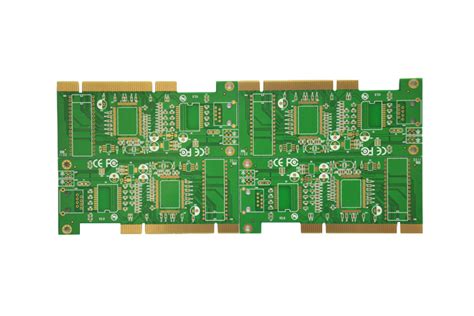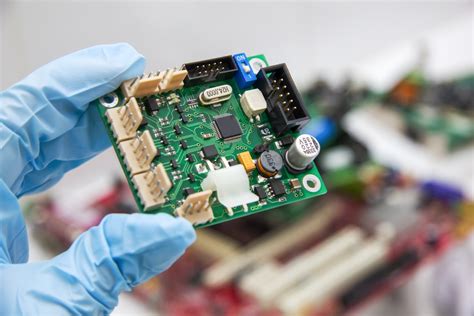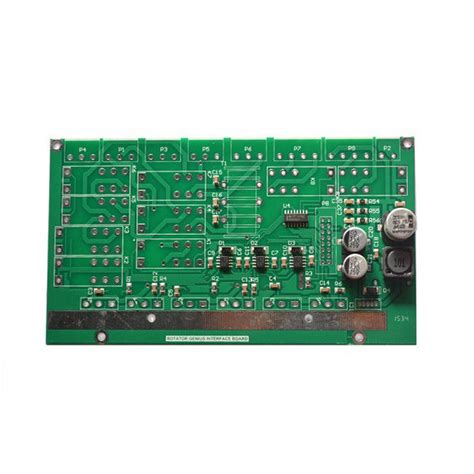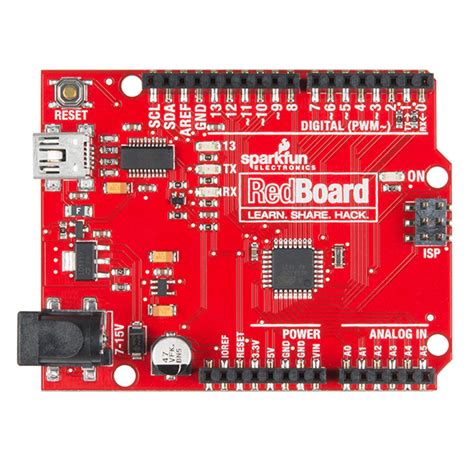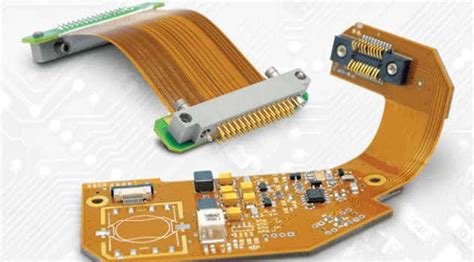Revolutionizing Electronics with Automated PCB Manufacturing Techniques

Key Takeaways
The rise of automated PCB manufacturing is reshaping the electronics industry by streamlining workflows and enhancing overall production quality. By leveraging advanced technologies such as robotics and AI, manufacturers are achieving significant efficiency gains in PCB assembly processes. This automation not only expedites production timelines but also minimizes human error, leading to more accurate and reliable formulations of printed circuit boards.
One of the most remarkable transformations brought about by automation is in cost reduction. Manufacturers can optimize their resources and reduce labor costs associated with manual processes. This economic efficiency allows companies to reallocate funds toward research and development, ultimately fostering innovation in the field.
Moreover, the precision achieved through these new methodologies is unparalleled. Automated systems ensure that every component is assembled with exacting standards, which is crucial given the complex nature of modern electronic devices. Greater precision translates to fewer defects in products like consumer electronics or industrial machinery.
The ongoing evolution of pcba technologies promises even broader horizons as we look ahead. It is clear that adopting these automated solutions will not just provide immediate benefits but will also position manufacturers favorably against global competition.
| Key Benefit | Description |
|---|---|
| Efficiency Gains | Streamlining workflow through automation |
| Cost Reduction | Lower labor costs and resource optimization |
| Enhanced Precision | Improved accuracy in PCB assembly |
In essence, the integration of automated techniques into PCB assembly marks a significant leap forward for the electronics manufacturing sector, paving the way for a more innovative and competitive landscape.

Introduction to Automated PCB Manufacturing
The world of electronics is evolving rapidly, and automated PCB manufacturing is at the forefront of this transformation. As electronic devices become increasingly complex, the demand for efficient and precise pcb assembly techniques has never been higher. Automation in the production of printed circuit boards (PCBs) not only enhances productivity but also minimizes human error, leading to a more reliable pcba process. This technology encompasses advanced machinery and software capable of streamlining various stages—from design and prototyping to testing and quality assurance. The integration of robotics in assembly lines allows for faster turnaround times and the ability to handle intricate designs that would be challenging through manual methods. Moreover, automated solutions can adapt to changes in demand more swiftly, providing manufacturers with the agility needed in today’s fast-paced market. The shift towards automation is not merely a trend; it represents a fundamental change in how professionals approach pcb assembly, with implications for cost efficiencies and competitive advantages within the electronics industry. Ultimately, this movement towards automated technologies suggests a future where pcba processes are seamlessly integrated with intelligent design capabilities, making it an exciting era for manufacturers and consumers alike.
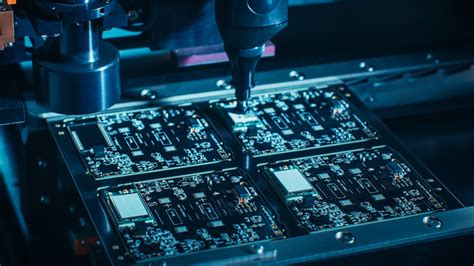
Key Advancements in Automation Technology
The field of automated PCB manufacturing has witnessed remarkable advancements that are reshaping the production landscape of printed circuit boards (PCBs). One of the most significant developments is the integration of advanced robotics and artificial intelligence, which has streamlined the pcb assembly process. These technologies enable machines to operate with greater precision and speed, allowing for the production of higher quality PCBA with fewer defects. Additionally, innovations in software solutions have enhanced real-time monitoring capabilities, giving manufacturers insights into production rates and equipment performance.
With data-driven approaches becoming commonplace, companies are harnessing the power of automation to optimize workflows and reduce lead times significantly. Moreover, next-generation manufacturing techniques such as additive manufacturing and secular printing have emerged, offering flexibility in design alterations with minimal effort. As a result, manufacturers can respond to market changes swiftly while maintaining cost-efficiency.
"The adoption of automation in PCB production not only accelerates throughput but also empowers engineers to focus on innovation rather than routine tasks."
This shift towards smarter manufacturing processes signifies a commitment to continuous improvement in quality management and operational excellence within the industry. Overall, these key advancements represent a transformative leap forward for companies involved in PCB and pcba production, aligning with growing demands for rapid development cycles and enhanced product reliability.
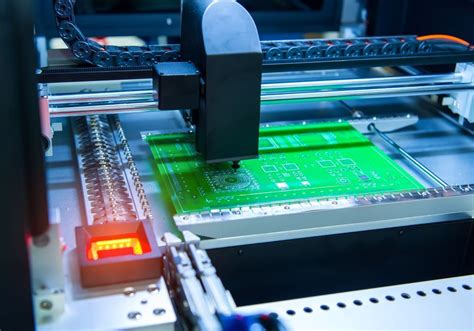
Efficiency Gains in PCB Production
The introduction of automated PCB manufacturing techniques has led to significant efficiency gains within the pcb assembly process. By utilizing cutting-edge machinery and robotics, manufacturers can streamline workflows, allowing for faster pcba production times without sacrificing quality. As automation eliminates many of the manual tasks traditionally associated with circuit board manufacturing, companies can increase output while simultaneously reducing errors that often arise from human intervention. This transformation is particularly evident in tasks such as component placement and soldering; with precision machinery, the rate of successful placements has soared. Moreover, real-time monitoring and feedback systems integrate seamlessly into automated processes, ensuring that potential issues are addressed proactively rather than reactively. As a result, not only is time spent on production reduced, but the reliability of the final product is also markedly improved. Such advancements in automation not only optimize productivity but also contribute to sustainable practices by minimizing waste and enhancing resource utilization in the production landscape.

Cost Reduction Strategies through Automation
The incorporation of automated PCB manufacturing processes has ushered in a new era for the electronics industry, where cost reduction is a primary focus. One notable strategy involves the adoption of advanced robotic technologies that streamline pcb assembly operations. By automating repetitive tasks, manufacturers can significantly reduce labor costs while maintaining high-quality standards in pcba production. Moreover, automated systems enable real-time monitoring and adjustments during the assembly process, which minimizes material waste and enhances resource allocation. Additionally, leveraging software algorithms for inventory management allows companies to optimize their supply chains, leading to reduced overhead expenses associated with excess inventory. This shift not only accelerates production cycles but also enhances overall operational efficiency. As these automation technologies continue to evolve, businesses are likely to experience further benefits in cost savings and productivity, ultimately solidifying their competitive edge in the fast-paced global market for electronics.
Enhancing Precision in Circuit Board Manufacturing
The advent of automated PCB manufacturing has significantly transformed the landscape of pcb assembly processes, leading to a notable enhancement in the precision of circuit board production. Automation technologies such as computer vision and advanced robotics facilitate meticulous inspections and assembly operations, ensuring that each component is placed with remarkable accuracy. As a result, the potential for human error has been drastically minimized, which is crucial, considering that even the smallest deviation can lead to significant malfunctions in electronics. The integration of real-time data analytics further allows for immediate adjustments during production, thereby enhancing overall reliability and consistency across batches. Moreover, precision-driven methods in pcba not only contribute to improved product quality but also foster greater confidence among manufacturers and consumers alike. Ultimately, this unwavering commitment to precision enables organizations to meet stringent industry standards and customer expectations more effortlessly than ever before.

Case Studies: Success Stories of Automated PCB Production
The impact of automated PCB manufacturing techniques is vividly illustrated through various case studies that highlight impressive transformations across the industry. One notable example involves a major electronics company that implemented automation in their PCB assembly processes, leading to a 40% reduction in production time. This acceleration not only improved their overall efficiency but also enabled them to respond more swiftly to market demands, enhancing their competitive edge. Another case study showcases a startup specializing in medical devices, which embraced advanced PCBA technologies. By leveraging automated systems for precision soldering and testing, they achieved an unprecedented defect rate of less than 0.1%. This exceptional quality had a direct impact on their product reliability and customer satisfaction. Furthermore, a large automotive supplier has effectively utilized automated processes to streamline high-volume pcb assembly, resulting in significant cost savings of up to 30%. These success stories underline the transformative potential of automation in enhancing both production efficacy and product quality within the electronic industry, marking a significant shift towards more sophisticated manufacturing capabilities.
Future Trends in Electronics Manufacturing
The landscape of electronics manufacturing is evolving rapidly, with automation playing a pivotal role in shaping the future. As the industry moves towards more sophisticated pcb assembly solutions, the integration of advanced technologies such as robotics, artificial intelligence, and machine learning is becoming increasingly prevalent. These innovations enable more efficient pcba processes, significantly reducing production times while maintaining or even enhancing quality standards. Looking ahead, we can anticipate a rise in smart factories where interconnected machines communicate seamlessly to optimize workflows and minimize waste. Additionally, the demand for miniaturization of electronic components amplifies the need for precision in manufacturing—automated systems excel at producing intricate designs with remarkable accuracy. As consumer electronics become more complex and diverse, manufacturers that leverage automated PCB manufacturing techniques will likely maintain a competitive edge by quickly adapting to market demands and customizing production runs to suit specific needs. This shift not only promises substantial improvements in production efficiency but also opens up new avenues for innovation within the electronics sector itself.
Conclusion: The Impact of Automation on the Electronics Industry
The integration of automated PCB manufacturing techniques has fundamentally changed the landscape of electronics production. As companies strive for greater efficiency and reduced costs, these advancements facilitate highly automated processes that minimize human intervention. This transformation not only accelerates production timelines but also enhances the overall quality of PCB assembly. With automation, manufacturers can achieve a level of precision in printed circuit board assembly that traditional methods cannot match. The ability to produce complex designs accurately and consistently is invaluable in a market where innovation is key to success. Moreover, these automated systems often result in significant waste reduction and resource savings, promoting a more sustainable manufacturing environment. As we look forward, the trend toward automation in the PCBA sector is poised to grow, driving further advancements and setting new standards for performance and reliability in electronic components. Through ongoing investment in these technologies, the potential to revolutionize the industry continues to expand, paving the way for enhanced products and services that meet evolving consumer needs.
Conclusion: The Impact of Automation on the Electronics Industry
As we reflect on the transformative effects of automated PCB manufacturing techniques, it becomes clear that the future of the electronics industry is increasingly reliant on efficiency, precision, and cost-effectiveness. The integration of automation in pcb assembly processes has significantly altered how printed circuit boards (PCBs) are produced, yielding improvements in both production speed and quality. By leveraging cutting-edge technology, manufacturers can streamline workflow, thereby reducing lead times and minimizing errors in pcba processes. Notably, these advancements not only facilitate faster turnaround for clients but also ensure that products meet stringent quality standards. As innovation continues to drive this field forward, we can anticipate further enhancements that will cement automation’s role as a fundamental pillar of modern electronics manufacturing. This paradigm shift not only impacts manufacturers but also influences how end-users interact with technology, fostering an ecosystem where high-performance electronics become more accessible and affordable. Ultimately, the rise of automated PCB manufacturing heralds a new era where efficiency and excellence go hand-in-hand in shaping the landscape of electronic production.
FAQs
What is automated PCB manufacturing?
Automated PCB manufacturing refers to the use of advanced machinery and technology to streamline the production of printed circuit boards (PCBs). This process enhances speed and accuracy in pcb assembly compared to traditional manual methods.
How does automation improve efficiency in PCB production?
By implementing automated systems, manufacturers can achieve higher throughput, minimize human error, and reduce lead times. Automation allows for repetitive tasks to be performed quickly and consistently, leading to significant efficiency gains in pcba processes.
What are the cost-saving benefits of automated PCB manufacturing?
Automation reduces labor costs and waste by optimizing resource usage. The ability to produce more pcbs in less time translates into lower operating costs, making it a financially advantageous approach for electronics manufacturers.
How does automation contribute to precision in circuit board manufacturing?
Advanced machinery used in automated pcb assembly allows for precise component placement and soldering, resulting in high-quality boards with fewer defects. This precision is crucial for meeting the stringent standards required in modern electronics.
Are there any real-world examples of successful automated PCB production?
Many companies have reported success stories after implementing automated techniques. For instance, a leading electronics firm increased their production speed by 30% while simultaneously decreasing defects by 20%, showcasing the effectiveness of automation in pcba processes.
For more information on PCB Assembly
For further details on how automated pcb manufacturing can benefit your projects, please click here.


